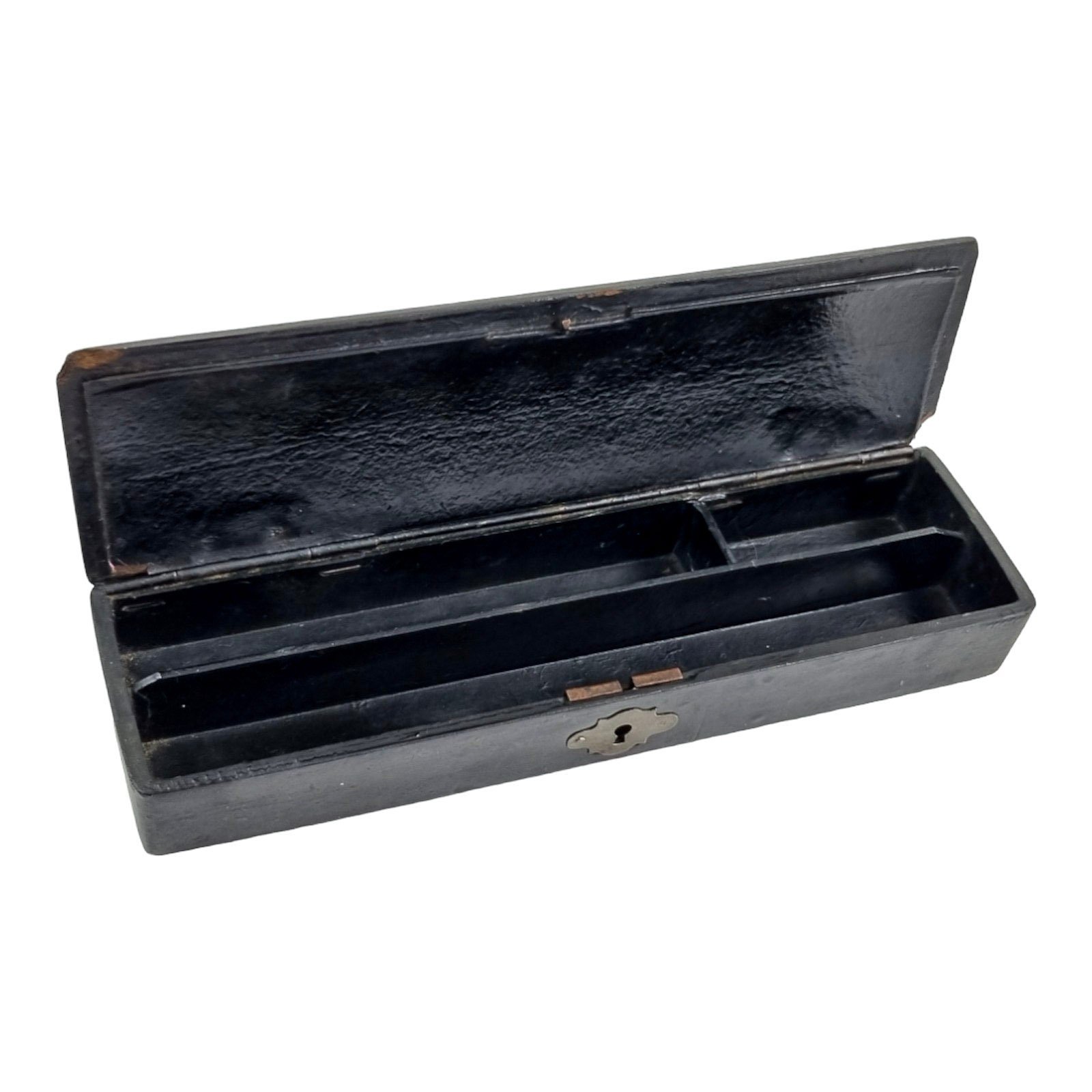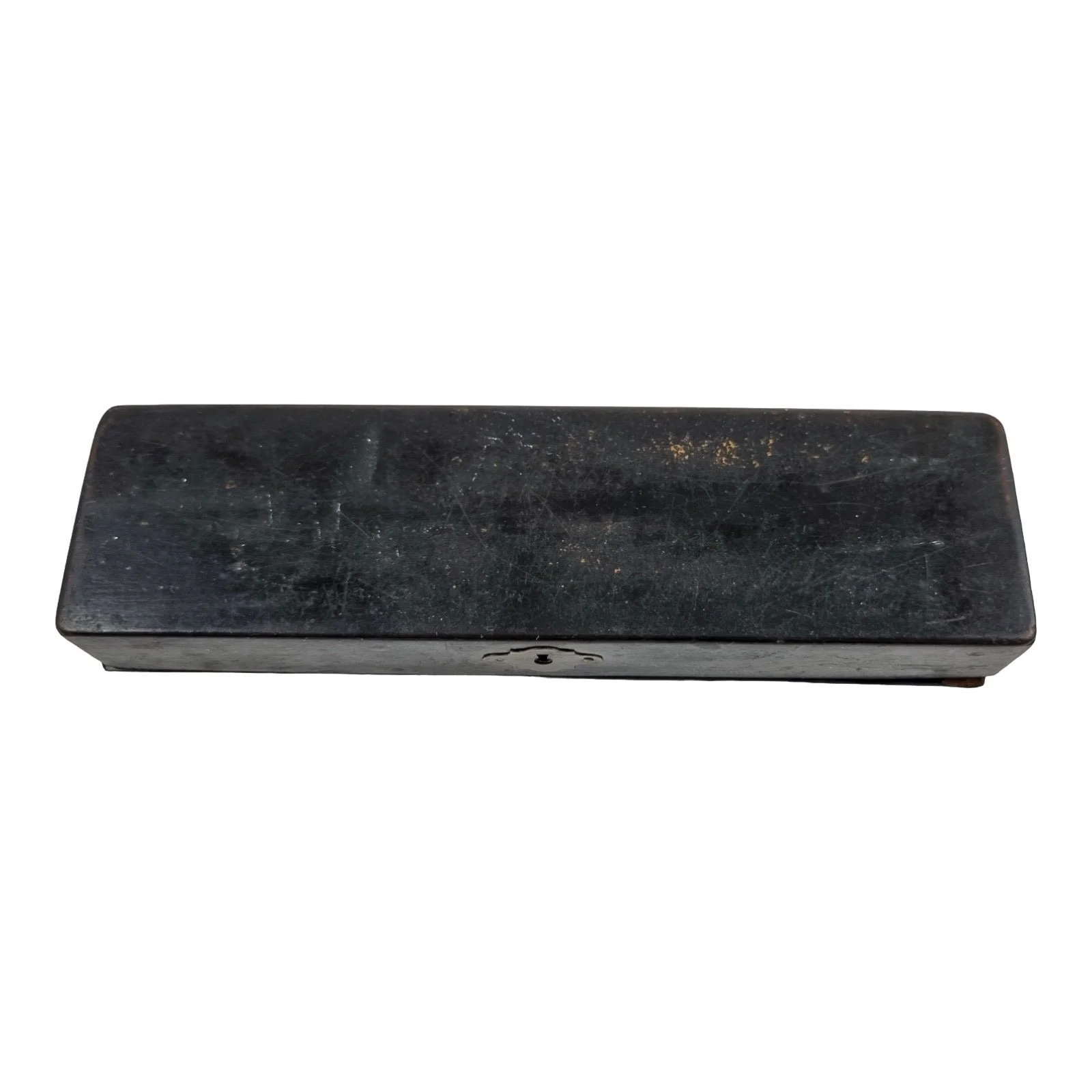 Image 1 of 9
Image 1 of 9

 Image 2 of 9
Image 2 of 9

 Image 3 of 9
Image 3 of 9

 Image 4 of 9
Image 4 of 9

 Image 5 of 9
Image 5 of 9

 Image 6 of 9
Image 6 of 9

 Image 7 of 9
Image 7 of 9

 Image 8 of 9
Image 8 of 9

 Image 9 of 9
Image 9 of 9










Victorian Tunbridge Ware bevelled casket jewellery box with geometric marquetry
Victorian Tunbridge Ware box inlaid with intricate geometric bands. The bevelled body is panelled with burr walnut and the marquetry is done with cross banded tulipwood, boxwood and kingwood. The lid has a vacant mother-of-pearl cartouche trimmed with a hexagonal border; the same design is repeated around the key escutcheon.
Wonderful example of this English artform with warm patina and beautiful grain to the wood.
Made in England, c. 1870’s.
1096 g
15 x 27.5 x 20 cm overall
9.8 x 25 x 17.7 cm inside
Good antique condition. Surface cracks and crazing to the wood; small losses to veneer, mostly to the left corner on the back of the lid; small losses to mother-of-pearl on lid; the keyhole mother-of-pearl is lacking; crack to lid; crack to base that is not visible underneath the felt, but visible from the inside.
Victorian Tunbridge Ware box inlaid with intricate geometric bands. The bevelled body is panelled with burr walnut and the marquetry is done with cross banded tulipwood, boxwood and kingwood. The lid has a vacant mother-of-pearl cartouche trimmed with a hexagonal border; the same design is repeated around the key escutcheon.
Wonderful example of this English artform with warm patina and beautiful grain to the wood.
Made in England, c. 1870’s.
1096 g
15 x 27.5 x 20 cm overall
9.8 x 25 x 17.7 cm inside
Good antique condition. Surface cracks and crazing to the wood; small losses to veneer, mostly to the left corner on the back of the lid; small losses to mother-of-pearl on lid; the keyhole mother-of-pearl is lacking; crack to lid; crack to base that is not visible underneath the felt, but visible from the inside.
Victorian Tunbridge Ware box inlaid with intricate geometric bands. The bevelled body is panelled with burr walnut and the marquetry is done with cross banded tulipwood, boxwood and kingwood. The lid has a vacant mother-of-pearl cartouche trimmed with a hexagonal border; the same design is repeated around the key escutcheon.
Wonderful example of this English artform with warm patina and beautiful grain to the wood.
Made in England, c. 1870’s.
1096 g
15 x 27.5 x 20 cm overall
9.8 x 25 x 17.7 cm inside
Good antique condition. Surface cracks and crazing to the wood; small losses to veneer, mostly to the left corner on the back of the lid; small losses to mother-of-pearl on lid; the keyhole mother-of-pearl is lacking; crack to lid; crack to base that is not visible underneath the felt, but visible from the inside.
Tunbridge ware is a form of decoratively inlaid woodwork, that is characteristic of Tonbridge and the spa town of Royal Tunbridge Wells in Kent in the 18th and 19th centuries. The decoration typically consists of a mosaic of many very small pieces of different coloured woods that form a pictorial vignette. Shaped rods and slivers of wood were first carefully glued together, then cut into many thin slices of identical pictorial veneer with a fine saw. Elaborately striped and feathered bandings for framing were pre-formed in a similar fashion. Many sorts of wood were employed for the various colours; about 40 were in regular use and only natural colours were used.
In the nineteenth century, Tunbridge ware was highly esteemed nationally as well as locally. The young Princess Victoria, a frequent visitor to the town with her mother the Duchess of Kent, used to buy articles of Tunbridge ware as gifts for her family. Today, these beautiful pieces can only be purchased in antique shops, as none have been made on a commercial basis since 1939.




















































